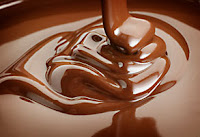
Most things in cars are pretty standard. The accelerator is always on the right, the brake on the left. The headlights tend to be at the front and the brake lights at the rear. But the one place that car designers have been let off the leash is in the ‘let’s put the indicator lever somewhere exciting’ department.

This is a Necker Cube. It’s interesting because almost all of us can see it two different ways. When I first look at it, I see a cube whose front face is bottom left. But if I stare at it long enough, it flips to the top right. You might see it the other way round. Either way, you will be able to see it in either orientation, given enough time.
Chemical addiction is something that is still not completely understood by medical researchers. What they do know is that certain stimulants such as amphetamine, caffeine, cocaine, nicotine and now fructose stimulate the release of dopamine in our brains.
But anything you do from which you gain pleasure will stimulate a dopamine response. I enjoy gardening (not really, but I was looking for a vertical activity so as to keep my G rating), but I’m not addicted to it. A lack of exposure to garden beds doesn’t cause me to become depressed or moody. I don’t feel the urge to break into parked cars to steal change so I can buy compost. I don’t carry a shovel in case I come across an unloved garden.
No, addiction is not about enjoyment. Ask any smoker whether their first cigarette was enjoyable. They’ll tell you they almost choked. Ask any alcoholic if their first drink was enjoyable. They’ll tell you it was repellent (unless they learnt to drink using wine sprizzers at Schoolies week).
Very recent research on the mechanics of addiction suggests that addictive substances do more than stimulate dopamine response. They actually change your brain. These drugs take over our brain’s learning function. When we learn or practice something we strengthen the links between neurons. These strengthened links help us remember and apply knowledge.
When you repeatedly feed rats cocaine, it appears to hijack this function. Links are created and thickened which reinforce the behaviour of taking the drug. They become hard-wired to seek out that behaviour. This may be the crucial difference between merely enjoying something (like gardening) and being addicted to it. Even worse, the research suggests that as the addiction links in our brain strengthen, we no longer even get the dopamine response. So we keep doing it but can’t even pretend its fun. I guess crack addicts don’t really look much like they’re having fun and come to think of it neither do smokers nor people who’ve pigged out on sugar.
I don’t remember my first taste of sugar and neither do you. It is the only highly addictive drug that we feed to babies way before they’re capable of remembering anything. By the time any of us are conscious of sugar, we are already well and truly addicted. Our brains have been hard-coded to seek out sugar as surely as the cocaine addict is wired to seek out things to sniff (preferably in nice neat lines).
An addicted person is wired to think that the only way they can feel normal is when they have access to the addictive substance. When it’s not available, they feel as though something is missing. Their brain reacts by going into mild depression or even severe depression if the abstinence is prolonged.
Any sugar addict (that is anybody) will tell you that sugar makes them feel better. The reality is that they are suffering a mild downer caused by the time since the last hit of sugar. Taking more sugar simply lifts them back to how an unaddicted person feels all the time. This vicious cycle of mild pleasure followed by mild withdrawal which in turn is relieved by mild pleasure is the simple mechanism of addiction. It is the same no matter which is the poison of choice, from cocaine to sugar. Just because it’s sold in supermarkets rather than back alleys doesn’t make it any less addictive or dangerous.
Anyone who’s read Sweet Poison fully understands the downside of their sugar addiction. There is no upside and there is downside by the truckload, from obesity to cancer and everything in between. But simply telling an addict that ugly things will happen to them will have no effect whatsoever. It’s why people still merrily buy cigarette packets plastered with photos of diseased lungs and amputated limbs. They know they will eventually pay the price, but right here right now all that matters is the gnawing neuron driven need to push back the downer and feel good again.
Sugar addicts are in exactly the same position except that (for now) they can get their fix without having to see the gangrenous outcome of Type II Diabetes. Most diets ask us to exercise willpower, and just like willpower based methods of quitting smoking, they don’t work. If they did, there wouldn’t be a diet industry. You cannot overcome an addiction by feeling like you are depriving yourself of something. That’s how the addiction works. It makes you feel deprived. If you add to that by consciously feeling deprived then you are in fact feeding the addiction. Asking you to exercise willpower is a recipe for disaster because it tells you to feel deprived every minute that you do not have access to sugar. It is doomed to failure.
Believe it or not, the power to stopping addiction is to firstly understand what it is, secondly know that it will end and thirdly think about it the right way.
Thinking about it in the right way is the key to successfully stopping an addiction … and that dear reader is the subject of next week’s post.
If you enjoyed this post, get free updates by email or RSS.
Persistent imbibers of this blog will dimly remember me making a bit of a fuss about an ad that Kerry Armstrong did for Coke late last year. In the ad, Kerry was concerned that we might believe that Coke:
- Makes you fat;
- Rots your teeth; and
- Is packed with Caffeine.
So she got busy busting these outrageous myths. In response I suggested that I couldn’t swallow the line that a food whose only constituent (besides water) is sugar is entirely good for you. I even went so far as to suggest that (gasp) Coke might be sugar-coating the truth somewhat.
It seems the folks over at the ACCC were just as worried, saying yesterday “After seeing the Myth Busting campaign the ACCC was immediately concerned about the misleading messages it was likely to send to consumers”.
The ACCC flew into action, and a mere 6 months later have given Coke a good strong talking to. They said “Coke’s messages were totally unacceptable, creating an impression which is likely to mislead that Coca-Cola cannot contribute to weight gain, obesity and tooth decay. They also had the potential to mislead parents about the potential consequences of consuming Coca Cola.“
Oh, but it wasn’t just a tongue lashing. Coke also received sound beating with a feather. They must also:
- publish a corrective advertisement in; The Australian, The Sydney Morning Herald, The Age, The Courier Mail, Adelaide Advertiser, The West Australian, and the Hobart Mercury
- publish a corrective advertisement for a period of 28 days on http://www.makeeverydropmatter.com.au
- publish for six months on http://www.makeeverydropmatter.com.au the correct levels of caffeine for Coca-Cola, Diet Coca-Cola and Coca-Cola Zero and compare this with the levels of caffeine in the same amounts of tea brewed from leaf or teabag and instant coffee, and
- implement a trade practices law compliance review.
I’m sure you’d agree that a pounding like that will make Coke (and the rest of Big Sugar) quake at the mere thought of trying that sort of thing on again. Coke have just been found to have run ads patently stating that ‘black was white’ and the best our regulators can come up with it that they run an ad along the lines ‘actually we got that a bit wrong and it turns out black is, after all, black’.
Six months after the fact, I’d be surprised if anyone (well, except me) even remembers the ad, let alone takes in the fact that some porky pies might have been told. No the damage was well and truly done in October. The public was told that Coke is not bad for you after all and for a fair number of them, I’ll wager the message stuck.
Some will suggest that I’m being less than kind to the ACCC. At least they did something. But it all looks too much like a win-win outcome to me. Coke wins by getting the ad through in the first place and achieving all the impact it planned for. And the ACCC wins by looking like a regulator of misleading advertising. The only loser is the punter who came away believing there was nothing wrong with drinking Coke or feeding it to his kids (at least till he sees the ‘corrective advertisement’, I’m sure).
An interesting postscript to this little saga is that the industry funded Advertising Standards Bureau had no problems at all with the ads when it determined complaints about them last year. I guess that’s the difference between a regulator and a self-regulator.
If you enjoyed this post, get free updates by email or RSS.
Giving up smoking is dead easy. I bet that got some ex-smokers’ attention.
A smoker is addicted to nicotine. Nicotine is found in cigarettes, cigars, tobacco, nicorettes and insecticide. It’s not the kind of thing you’re likely to come across by accident. In fact anyone consuming it, is doing so very much on purpose.
If you decide that you no longer wish to be addicted to nicotine, there is a very short list of things you should stop doing:
- Do not put cigarette in mouth.
- If you discover a cigarette in your mouth do not light it.
- Do not drink insecticide.
There. Done. Now you just need to wait about three weeks for the addiction to pass. Easy.
A Sugarer (the collective noun for people addicted to Sugar – and yes I did just make that up) has a much more daunting task ahead of them.
The active ingredient (from an addiction point of view) in sugar is fructose. Thanks to the marvels of modern food production, fructose is now embedded in almost every single food item on the supermarket shelf. Imagine how hard it would be stop smoking if everything you ate or drank contained the addictive ingredient.
Giving up fructose is far harder than giving up nicotine. You still have an addiction to fight but before you even get that far you’ve got to pick your way through a minefield of fructose filled foods. But there are some big food groups that anyone giving up fructose should absolutely avoid. They are:
- Confectionary and Bikkies (I know you knew that already but just in case you forgot)
- Flavoured drinks (Not just softdrinks. This includes juice and flavoured milk)
- Breakfast cereals
- Condiments (For example BBQ sauce has more sugar than chocolate sauce)
- Muesli Bars
- Yoghurts
Avoid those foods and you will have skipped 90% of the fructose you are likely to encounter in a day. Obviously there are exceptions. For example you can eat natural yoghurt (but you’d better get used to the sour taste) and you can eat porridge and most other unflavoured oat cereals. But it’s better to avoid the whole category to start with and then fine tune your selections once you become a little more experienced as a fructophobe (yep, another made up word).
Next Week (Part 2 – Why Willpower is not required)
If you enjoyed this post, get free updates by email or RSS.
Isn’t it nice when people with lots of the folding stuff come over all luvy-duvy and start doing nice little things for you? First Kevin wants to buy you a plasma TV and then decides you need another. Then the Reserve Bank decides you’re paying too much on the mortgage and drops the rate. Now McDonalds arrives on the doorstep bearing gifts.
No, Macca’s isn’t offering to drop by and take the garbage out on Monday night, but they are a bit concerned about how little Johnny is going at school. In fact they’re so worried about the state of maths education, they’ve decided to pay for some tutoring on the side.
McDonald’s announced last week that it would be extending the reach of the free online maths tutor it provides as an employment perk for its teenage staff. Now the three teenagers who don’t already work at Macca’s will get their skills sharpened up. The program will be available to all Australian secondary school students and paid for by McDonald’s. Julia Gillard thinks its great idea. And why wouldn’t she? That’s one less thing she has to pay for out of the Federal Education Budget.
Some less than trusting souls got a bit hot and bothered about McDonald’s pulling a swifty here. They suggested that this was all about them getting advertising on the cheap. If that really was the plan then Macca’s needs to seriously reconsider its marketing strategy, because it’s neither cheap nor likely to be particularly effective as an adverting vehicle. The only credit they get is a one liner on the math’s tutor’s home page saying Macca’s paid the bill. And for that, they’ve paid millions. What a bargain!
No, this is about making us (and more importantly, our government) feel good about people who dispense junk food to children. And it’s part of a very definite trend in food marketing. Cadbury wants to assure us the cocoa in their chocolate was not picked by child labour. Nestle likes to help kids learn cricket. Pepsico and Kellogg’s have pumped $400m into the UK Government’s Change4Life program aimed at getting kids exercising. And the Australian Food and Grocery Council, (the lobby group for them all) wants us to believe its members won’t advertise junk food to children (except as part of a healthy lifestyle – whatever that means).
Now that’s a lot of green to be chucking around in the hope you’d get the warm and fuzzies about Big Sugar. But this is a long game and these folks have played close attention to what befell Big Tobacco. When the government could no longer pretend that ciggy’s didn’t kill you, out came the laws and the taxes and the negative ads. And it became an awful lot harder (but not impossible) to make an honest living selling durries.
Big Tobacco didn’t have a leg to stand on. But Big Sugar plans to have a bit more leverage when the inevitable occurs. One day the research on the truly deadly nature of sugar will seep into the public conscience and being a member of the Big Sugar club will be about as popular as the proverbial banker at the barbie (you remember those St George ads don’t you?). When that day comes, Big Sugar wants to have some ‘discussion points’. Things like, how exactly are you going to fund that math’s program you’ve become so dependent on? And what about junior sport? Who’s going to pay for that? And, and … stay tuned for more ‘gifts from Big Sugar’.
I think we should be carefully counting the fillings in the mouth of this gift horse. Let’s stop playing games (sponsored by Milo) and start doing something about the 60kg of sugar the average Australian consumes each year.
If you enjoyed this post, get free updates by email or RSS.
What do these foods have in common:
Give up? They all have the same GI. GI stands for glycaemic index and, simply put, it is a measure of the degree to which any given food produces a spike in blood sugar (and therefore insulin).
It’s kind of like the different types of fuel you can feed a fire. If you put pine planks on the fire, they will burn very hot and very quickly but they will be used up in minutes. If, however, you put hardwood sleepers in, they will burn slowly for hours. Low-GI foods are hardwood sleepers to our body and high-GI foods are pine planks.
Lately people have been putting it about that we should all eat low GI foods. The theory is that if you aim to keep blood-glucose levels and therefore insulin levels low and constant, your appetite will be largely suppressed and large quantities of insulin will not be being released and used to create body fat.
GI diets effectively treat all of us like we are suffering from insulin dependent diabetes. If you need an injection of insulin to lower your blood sugar then it is pretty important to avoid foods which will cause sudden spikes in blood sugar. But if you don’t then there is precious little evidence that GI makes any difference whatsoever to your health.
All of the foods in the list not only have the same GI, it is a low-GI (46). So if you were on a Low-GI diet you could merrily chomp on any of those foods with a completely clear conscience. Does a diet of M&Ms, Nutella and pasta make sense to you? Do you think you’d lose weight or be healthier? No, neither do I.
The latest innovation on the GI marketing bandwagon is low-GI sugar. It’s apparently produced by increasing the particle size of the molasses used to create brown sugar and retaining more of the phenols and other vitamins and minerals in the original sugar cane. This produces a lower GI than normal white sugar (50 as opposed to 65). Great but it’s still sugar and it’s still half fructose, one of the most dangerous sugars known to man. In fact if you really wanted a low GI sugar you should go for pure fructose. Its GI is only 19. And don’t need to guess too hard to know what I think of that.
There’s nothing intrinsically wrong with GI as a piece of information about food. It’s just not very helpful if you are trying to eat well, because it is so easily manipulated as a marketing device.
Lowering the GI of sugar is a cynical marketing exercise that’s right up there with lowering the carbon emissions of the cows that make the glass and a half of milk in every bar of Cadbury’s chocolate. What’s next low carbon land mines, odourless cigarettes or perhaps even organic rat poison?
If you enjoyed this post, get free updates by email or RSS.
Cadbury is worried about the carbon footprint of its chocolate. I think there are plenty of things to worry about with chocolate but I must admit that the carbon footprint would have been close to the bottom of the list.
Apparently the ‘glass and a half of full cream milk’ is responsible for 60 percent of the total greenhouse gas emissions produced by the construction of a family block of Dairy Milk Chocolate. But don’t worry, Cadbury plan to feed the cows more clover so they burp less and give them less fibre so they … (well, you get the picture). All of this feed manipulation will result in a carbon emission reduction of 50 percent by 2020. I do hope Kevin is paying attention.
Cadbury have also decided that they should look out for the lactose intolerant among us with a very clear warning. From now on Dairy Milk Chocolate will come with a warning label: “CONTAINS MILK”. I’m so glad they bothered.
But that’s not the end of the image management. Cocoa has a bit of a bad rap because lately people have noticed that most of it gets picked by children paid little or nothing for their efforts. So Cadbury plan get themselves a Fairtrade logo by the end of August 2009, but only for chocolate on sale in the UK. Australian consumers clearly aren’t fussy about such things. So the cocoa used in Australian Cadbury products will continue to exploit third world children.
You may be wondering about the motivation for this flurry of positive spin (at least in the UK). Cadbury have created a billion dollar empire off the back of a product that is 55.5 percent sugar and 29.5 percent fat.
More than half of their product is as addictive as cocaine and has been unequivocally proven to cause obesity, type II diabetes and heart disease. I’m struggling to think of a food that could be more dangerous for human consumption. And so far they’ve gotten away with convincing us all it’s a harmless treat.
Are we really expected to believe they’ve gone all tree-huggy and grown a conscience? No, the far more likely explanation is that all this work is aimed at making us feel a bit better about chocolate. The hope being that, when folks like Dr Walker call for a chocolate tax, right thinking people will quietly point him and his ilk to Cadbury’s impeccable green credentials and responsible labelling.
Dr Walker is a British GP who wants governments to become our nanny and stop us eating chocolate. It’s a silly proposal and it got voted down by the British Medical Association (by only two votes), but it’s indicative of a distinctly anti-chocolate mood that is gathering pace in old blighty.
We don’t need warnings about milk on our milk chocolate, but we do need warnings like these:
CONTAINS FRUCTOSE: WILL MAKE YOU OBESE AND GIVE YOU TYPE II DIABETES.
CONTAINS FAT: WILL HELP THE FRUCTOSE MAKE YOU OBESE.
CONTAINS COCOA: PICKED BY CHILDREN FOR LITTLE OR NO PAY.
Let’s stop worrying about flatulent cows and start worrying about exploited children in Africa and fat children here.
If you enjoyed this post, get free updates by RSS or email.
Pre-emptive strikes are all the fashion these days. Got a pesky middle-eastern dictator hiding weapons of mass destruction? A first strike should sort him out. Got a bit of a global financial crisis on the horizon? Head it off by giving everyone a new plasma TV.
But first strikes don’t always work out so well (just ask George Bush). Early last year a medical pre-emptive strike was abandoned because it was killing too many people. The US National Institutes of Health stopped part of an ongoing clinical trial on diabetes because it was clear that the patients receiving the treatment had a 22 percent higher risk of death than the people who weren’t.
The study involved aggressively treating high blood sugar with medication. Type II diabetes is caused by persistently high blood sugar. The standard treatment for high blood sugar (and therefore diabetes) is a prescription of ‘eat less fat and exercise more’. When that doesn’t work (as it almost never does) the prescription is changed to a combination of drugs.
There are a few different types of medication but the ones most commonly used in Australia work by stimulating the body to produce more insulin. Insulin is the hormone we naturally produce to clear sugar from the blood. But when there is too much fat in the arteries, the body becomes less sensitive to insulin and the sugar doesn’t get cleared. If blood sugar stays high for a long time, damage starts to occur in places where we have lots of small blood vessels, such as our kidneys, our eyes and eventually our hands and feet.
The drugs squeeze that little bit more insulin out of our pancreas to help clear the blood sugar. As you might expect, putting the pancreas on overdrive eventually results in it conking out completely. Then the only option is to start injecting insulin every day. By then, the drugs have converted a Type II diabetic (who produces insufficient insulin) into a Type I Diabetic (who produces none).
Unfortunately a side effect of the drugs is weight gain. Giving people more insulin (or having them produce it themselves) simply channels sugar out of the bloodstream and converts it into body fat.
The preferred long term measure of blood sugar is the haemoglobin A1c test. People without diabetes will have an A1c between four and six percent. The current treatment goal for people with diabetes is to manage the use of drugs so as to keep A1c less than seven percent. The abandoned trial was an attempt to see if it would be possible to use even higher doses of drugs and push people back into the normal range. And it appears not to have been a very good idea at all. The side effect became a bit nastier than simply putting on a few kilos. Twenty two percent more of the patients died.
Giving more insulin to an insulin resistant person is like curing arterial blockage by increasing blood pressure. A smarter strategy is to remove the blockage. Unfortunately for diabetics the ‘blockage’ is high blood fats, something which can’t just be sliced out with the surgeon’s scalpel.
Diabetes now afflicts 13 percent of the US adult population with double that number estimated to be pre-diabetic (insulin resistant), a total of 40 percent. Australia is not there yet but we are tramping that path as fast as our fat little feet can carry us. When 40 percent of our adult population requires treatment with a lifelong course of drugs, we’d better start thinking about some serious tax increases to keep the health system afloat. Paying back the economic stimulus package will be the least of our worries.
The standard pharmacological treatment for diabetes doesn’t cure anything. It merely offers an invidious trade-off between avoidance of kidney damage, blindness and gangrene today and weight gain and permanent pancreatic damage tomorrow.
If you ejoyed this post, get free updates by email or RSS.
Australia’s tank commanders are having trouble telling which large objects on the parade ground are tanks and which are the men who are supposed to be driving them. Things in the navy are a little easier. The ships are the grey things.
Recent reports have revealed that one in seven military folk are medically obese. A number like that would be trumpeted from the highest government office if it applied to the rest of us. The non-military portion of society sailed past those figures sometime in the eighties. But it’s troubling to those who were counting on the military to be of some use should we be attacked.
The average Australian digger is now 16 kilograms heavier than the men who stormed Gallipoli. But those men came from very different time and ate a very different diet. In 1915 Cadbury had only just started shipping its Dairy Maid Chocolate bar, the first ever packaged chocolate product. In the United States, Coca-Cola and Pepsi-Cola were still garage operations run out of sheds behind the pharmacies of their inventors. The men stepping ashore at Anzac Cove had never even tasted packaged chocolate or fizzy drink unless they had a generous relative in the mother country.
Corn flakes were the stuff of science fiction. Men shipping out for Gallipoli wouldn’t be able to buy breakfast cereal for another decade. And the only place they’d taste fruit juice they hadn’t squeezed themselves was in Church on Communion Sunday. It would be 40 years before they could buy orange juice at all in Australia.
There weren’t many overweight people. Four out of every five people from that time were downright skinny by today’s standards. Obesity was as rare then as underweight politicians are today. There was no such thing as heart disease and the medical speciality of cardiology wasn’t even going to be necessary for another quarter of a century.
Obviously no-one was getting rich selling diets or gym-memberships. There wasn’t even enough interest in diets to start a woman’s magazine. The first copy of Woman’s Weekly wouldn’t be rolling off the presses for another quarter of a century and it would be more than half a century before the first Weight Watcher’s meeting would happen.
The men who went off to fight at Gallipoli had grown up in households where sugar was a very occasional treat. It was too expensive to use every day and almost none of their food had any added before they bought it.
That’s a stark contrast to today where the modern soldier is fed sugar in almost every mouthful. They are eating almost 1.4 kilograms of sugar a week. Sugar is embedded in everything from their breakfast cereal to their drinks and everything in between.
The tidal wave of sugar is causing the epidemic of obesity and its nasty consequences from heart disease to diabetes. Unfortunately what we are seeing is just the start of what will turn out to be a significant problem for the defence forces (and everyone else) in the coming decade.
The military is tough on who it is prepared to take. Before 2006 you couldn’t have a Body Mass Index (BMI) of more than 30 (the border between being merely overweight and being obese). In 2006, as part of the Government’s drive to increase recruitment, the goal post was moved to 33. At the current rate of expansion of our collective waistline, soon the only person fit to serve will the winner of The Biggest Loser. Not surprisingly, the military is conducting a study to see if the goal post can be moved again.
The elephant in the room (or perhaps in this case, on the parade ground) is getting hard to hide. For decades there has been grumbling by researchers that couldn’t prove that feeding rats fat made them fat but could prove that feeding them sugar not only made them fat but gave them heart disease, type II diabetes, fatty liver disease and testicular atrophy.
There is now no scientific doubt that dietary sugar is directly responsible for raising the amount of circulating fat in our body. And the evidence is becoming overwhelming that it is the fructose half of sugar which measurably and directly produces obesity. But simply telling an obese soldier (or anyone else) to stop eating sugar is pointless in a society where it is almost impossible to find a food that does not have sugar added.
The well meaning digger may no longer put a teaspoon of sugar in their cuppa, but what about the fourteen teaspoons in their ‘healthy’ breakfast cereal and small glass of ‘unsweetened’ apple juice? Or the teaspoon of sugar in every dollop of sauce or mayonnaise?
Obesity can be eliminated as a chronic health problem by the simple removal of fructose from the Australian diet. If that were the rule tomorrow, the industrial food complex would have fructose free foods (which tasted identical) on our supermarket shelves by next Tuesday. But until that is the rule, we will all pay the price with increasingly impaired lifestyles and ultimately shortened lives.
If you ejoyed this post, get free updates by email or RSS.
Also published in Crikey


















Recent Comments